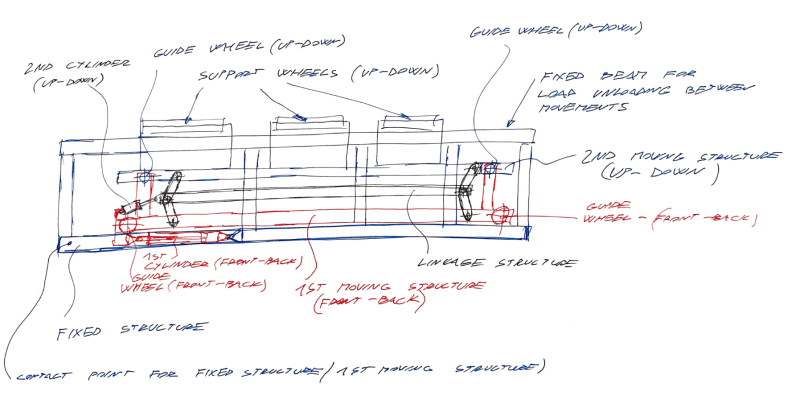I could improve in hydraulic systems, but when I design a machine, I sometimes need some details regarding this area and now is this situation.
Let's say we have a machine consisting of a fixed structure and a moving structure. We move the second structure relative to the first one with a hydraulic cylinder. Now, we have two options for how to fix the second structure in the end position:
1: We don't use a total stroke of the cylinder, but instead, we design both structures so that they have some common points that come in contact before the cylinder reaches the end position. Both structures are somewhat locked to each other. Of course, we need to keep the pressure in the hydraulic system. We also need to design structures strength-wise so that they can withstand these contact forces.
2: We use the full stroke of the cylinder, and there are no common contact points on both structures. We lock the structure in the end position with the cylinder end position. Of course, we keep the pressure in the hydraulic system.
Cylinders are slow-moving; no dynamic or inertia forces are coming into play.
Which one do you prefer and why? Intuitively, I like the first one more.
Let's say we have a machine consisting of a fixed structure and a moving structure. We move the second structure relative to the first one with a hydraulic cylinder. Now, we have two options for how to fix the second structure in the end position:
1: We don't use a total stroke of the cylinder, but instead, we design both structures so that they have some common points that come in contact before the cylinder reaches the end position. Both structures are somewhat locked to each other. Of course, we need to keep the pressure in the hydraulic system. We also need to design structures strength-wise so that they can withstand these contact forces.
2: We use the full stroke of the cylinder, and there are no common contact points on both structures. We lock the structure in the end position with the cylinder end position. Of course, we keep the pressure in the hydraulic system.
Cylinders are slow-moving; no dynamic or inertia forces are coming into play.
Which one do you prefer and why? Intuitively, I like the first one more.

